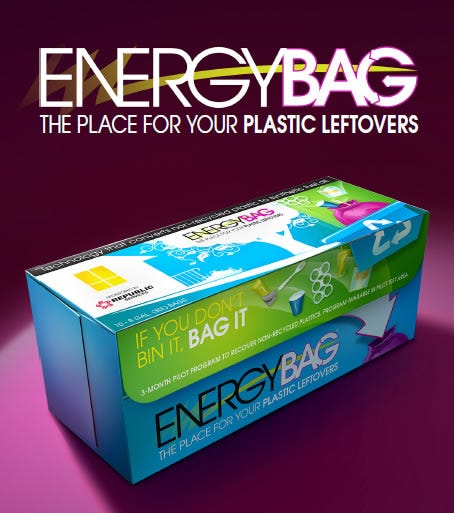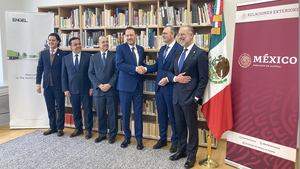Purple is the new green: “Energy Bag" program to convert plastics-to-energy
Energy recovery is positioned as a complement to current efforts to divert waste from landfills. However, bringing the technology to the mainstream in the U.S. has been somewhat slow moving. But a new initiative hopes a purple bag might be the catalyst for change.
June 26, 2014
Energy recovery is positioned as a complement to current efforts to divert waste from landfills. However, bringing the technology to the mainstream in the U.S. has been somewhat slow moving. But a new initiative hopes a purple bag might be the catalyst for change.
 Co-sponsored by The City of Citrus Heights, Republic Services and Dow Chemical, the Energy Bag program hopes to prove that resource recovery of non-recycled plastics is a viable municipal process that can achieve many positive long-term environmental and economic results, including fewer tons of landfill trash, more local energy resources and less energy dependence.
Co-sponsored by The City of Citrus Heights, Republic Services and Dow Chemical, the Energy Bag program hopes to prove that resource recovery of non-recycled plastics is a viable municipal process that can achieve many positive long-term environmental and economic results, including fewer tons of landfill trash, more local energy resources and less energy dependence.
The summer-long program will ask approximately 27,000 Citrus Heights households to separately collect plastic items not currently eligible for recycling in the city. These items include juice pouches, candy wrappers, dog food and cat food bags, frozen food wrappers, outer wraps for water bottle or soda packages and even plastic dinnerware, plates and cups.
The programs calls for pilot households to receive bright purple "Energy Bags" to be used used exclusively for collecting these plastics. After each bi-weekly recycling collection during the summer, these bags will be separated and sent to a sorting depot and then to the energy conversion facility, Agilyx Corp., a provider of waste plastic to oil conversion technology.
"We want people to change their behavior - we don't want the material to end up in the landfill," Erica Ocampo, sustainability manager for Dow packaging & specialty plastics, told PlasticsToday. "It also makes good economic sense as the community saves money from not sending it to the landfill."
Recent EPA statistics state that the U.S. creates over 250 million tons of trash each year, with more than half ending up in landfills. The Energy Bag program hopes to offer one very attractive diversionary option - turning the non-recycled plastics into a valuable energy resource.
"We believe the story is one of collaboration, this doesn't happen by itself," Ocampo said.
About the Author(s)
You May Also Like


